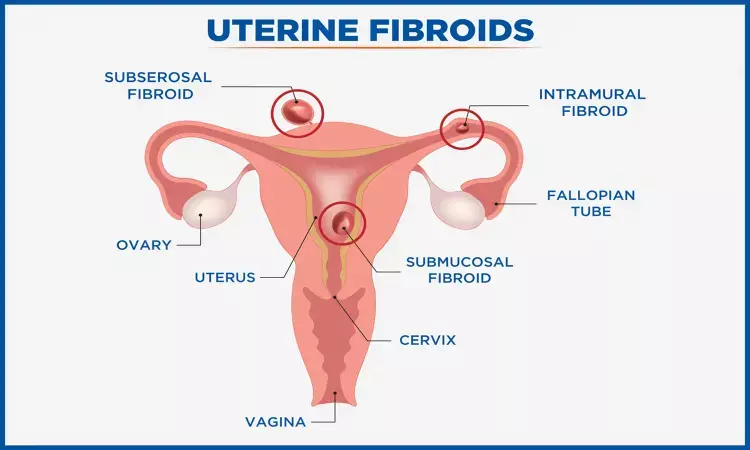- Home
- Medical news & Guidelines
- Anesthesiology
- Cardiology and CTVS
- Critical Care
- Dentistry
- Dermatology
- Diabetes and Endocrinology
- ENT
- Gastroenterology
- Medicine
- Nephrology
- Neurology
- Obstretics-Gynaecology
- Oncology
- Ophthalmology
- Orthopaedics
- Pediatrics-Neonatology
- Psychiatry
- Pulmonology
- Radiology
- Surgery
- Urology
- Laboratory Medicine
- Diet
- Nursing
- Paramedical
- Physiotherapy
- Health news
- Fact Check
- Bone Health Fact Check
- Brain Health Fact Check
- Cancer Related Fact Check
- Child Care Fact Check
- Dental and oral health fact check
- Diabetes and metabolic health fact check
- Diet and Nutrition Fact Check
- Eye and ENT Care Fact Check
- Fitness fact check
- Gut health fact check
- Heart health fact check
- Kidney health fact check
- Medical education fact check
- Men's health fact check
- Respiratory fact check
- Skin and hair care fact check
- Vaccine and Immunization fact check
- Women's health fact check
- AYUSH
- State News
- Andaman and Nicobar Islands
- Andhra Pradesh
- Arunachal Pradesh
- Assam
- Bihar
- Chandigarh
- Chattisgarh
- Dadra and Nagar Haveli
- Daman and Diu
- Delhi
- Goa
- Gujarat
- Haryana
- Himachal Pradesh
- Jammu & Kashmir
- Jharkhand
- Karnataka
- Kerala
- Ladakh
- Lakshadweep
- Madhya Pradesh
- Maharashtra
- Manipur
- Meghalaya
- Mizoram
- Nagaland
- Odisha
- Puducherry
- Punjab
- Rajasthan
- Sikkim
- Tamil Nadu
- Telangana
- Tripura
- Uttar Pradesh
- Uttrakhand
- West Bengal
- Medical Education
- Industry
Transcervical resection of submucous fibroid reduces menstrual blood loss: EJOG

Uterine fibroids are very common, affecting >60% of women aged 45 and older. Submucous fibroids can cause heavy menstrual bleeding (HMB), dysmenorrhea and fertility problems. Transcervical resection of myoma (TCRM) is a widely implemented treatment, in particular for FIGO PALM-COEIN classification type 0, 1 and 2 fibroids. TCRM seems to be safe and effective for reducing HMB in qualitative studies, with only a small percentage of patients needing repeat surgery (approximately 4% after 2–3 years and < 10% after 5 years).
A prospective cohort study was conducted in three teaching hospitals and two academic hospitals in the Netherlands. Patients with HMB (PBAC score > 150) and submucous fibroids (type 0, 1, 2, 3, 4 and hybrid type 2–5) scheduled for TCRM were eligible. At baseline and 3 months after TCRM a Trans Vaginal Ultrasound (TVU) was performed and a Hb sample was taken. Patients filled out the Pictorial Blood Assessment Chart (PBAC) and the Uterine Fibroid Symptom and Quality of Life (UFS-QOL) questionnaire at baseline and up to 6 months after surgery. Primary outcome was improvement in PBAC score 6 months after surgery. Secondary outcomes were improvement in PBAC score and Hb level 3 months after surgery and UFS-QOL scores 3 and 6 months after surgery.
126 patients were included and 104 were operated. PBAC were obtained from 98 patients. Six months after surgery, 56.6% of patients went from HMB to normal menstrual bleeding (PBAC < 150). A significant reduction in median PBAC scores of 427 (IQR 198 – 1392) (p<.0001) was found (86% improvement). UFS-QOL scores were obtained from 91 patients. Symptom severity improved from a median of 54 on a scale of 100 (IQR 44–66) at baseline to 22 (IQR 9–41) after 6 months (p<.0001) (59% improvement). Health related quality of life (HRQOL) improved from a median score of 44 on a scale of 100 (IQR 33–62) to 89 (IQR 67–97) 6 months after surgery (p<.0001) (102% improvement).
In women with submucous fibroids, HMB measured by PBAC decreased significantly 6 months after TCRM compared to baseline. Symptom severity scores were significantly lower and health related quality of life scores were higher 6 months after TCRM. A trend towards a decrease of anemia after surgery was found. Linear regression analysis demonstrated that higher age, black ethnicity and larger fibroid volume at baseline were associated with a larger improvement for changes in PBAC score, in UFS-QOL score and in Hb level, respectively.
In this study authors proved that TCRM reduces post-operative PBAC scores, severity of other fibroid related symptoms and improves health related Quality of Life in patients with submucous fibroids. This is valuable information for decision making in the treatment of fibroid induced HMB for both clinicians and patients.
Source: A.L. Keizer et al.; European Journal of Obstetrics & Gynecology and Reproductive Biology 274 (2022) 128–135
MBBS, MD Obstetrics and Gynecology
Dr Nirali Kapoor has completed her MBBS from GMC Jamnagar and MD Obstetrics and Gynecology from AIIMS Rishikesh. She underwent training in trauma/emergency medicine non academic residency in AIIMS Delhi for an year after her MBBS. Post her MD, she has joined in a Multispeciality hospital in Amritsar. She is actively involved in cases concerning fetal medicine, infertility and minimal invasive procedures as well as research activities involved around the fields of interest.
Dr Kamal Kant Kohli-MBBS, DTCD- a chest specialist with more than 30 years of practice and a flair for writing clinical articles, Dr Kamal Kant Kohli joined Medical Dialogues as a Chief Editor of Medical News. Besides writing articles, as an editor, he proofreads and verifies all the medical content published on Medical Dialogues including those coming from journals, studies,medical conferences,guidelines etc. Email: drkohli@medicaldialogues.in. Contact no. 011-43720751


